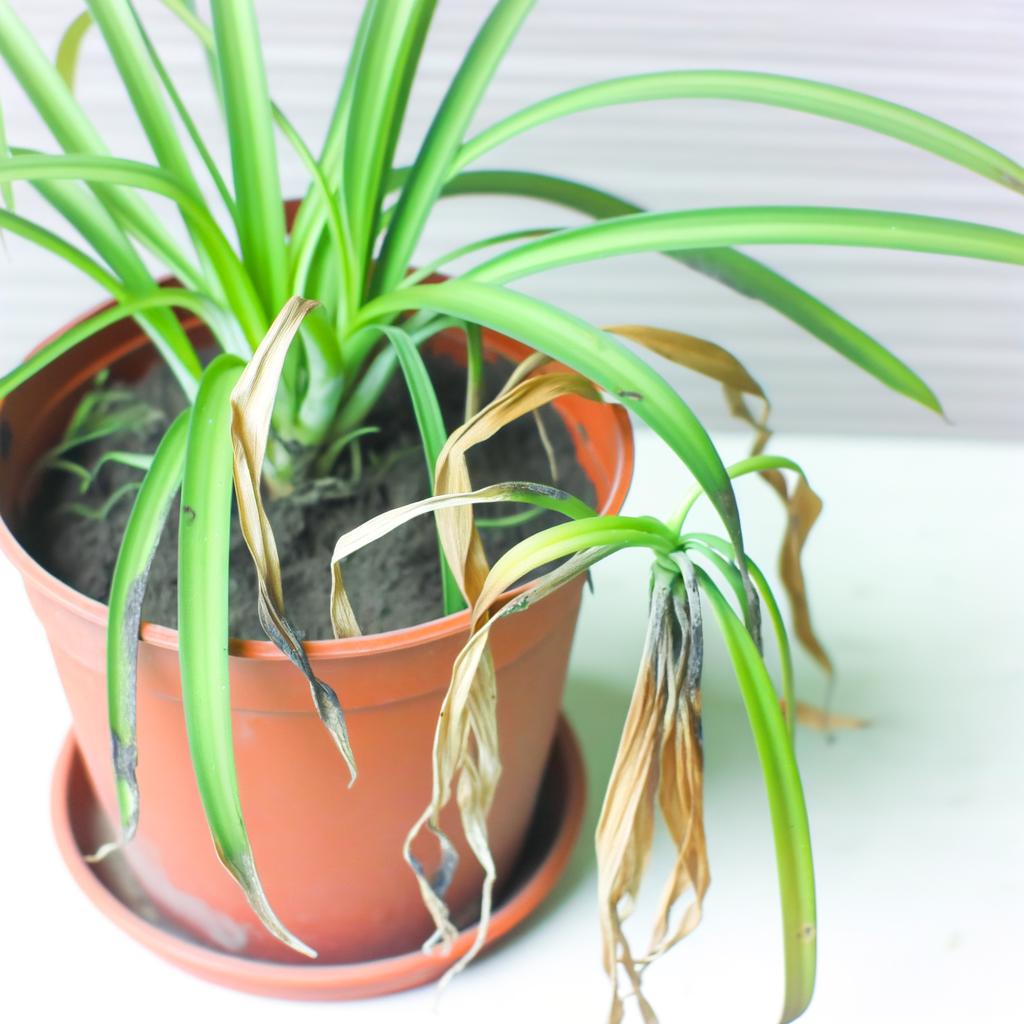Spider Plant Drooping: Why It Happens & How to Fix It
Seeing your spider plant with droopy, limp leaves can be concerning, but don't panic! Drooping is a common issue that's usually easy to fix. This guide will help you identify the cause and provide the right solution to revive your wilting spider plant.

Quick Diagnosis Guide
Before treating your droopy spider plant, it's important to identify the root cause. Here's how to diagnose the problem:
🔍 Diagnostic Checklist:
- • Check soil moisture: Is it bone dry or soggy wet?
- • Assess light conditions: Too much direct sun or too little light?
- • Check temperature: Is it near a cold draft or heat source?
- • Look for pests: Any visible insects or webbing?
- • Check pot size: Is the plant root-bound?
✅ Healthy Spider Plant Signs:
- • Upright, arching leaves
- • Bright green color
- • Firm, turgid leaves
- • Active growth
- • Producing spiderettes
❌ Drooping Spider Plant Signs:
- • Limp, floppy leaves
- • Leaves hanging down
- • Loss of leaf rigidity
- • Pale or yellowing leaves
- • Stunted growth
Common Causes of Drooping
1. Underwatering (Most Common)
When spider plants don't get enough water, their leaves lose turgidity and droop. This is the most common cause of drooping and the easiest to fix.
Signs of Underwatering:
- • Dry, crumbly soil
- • Leaves feel thin and limp
- • Brown, crispy leaf tips
- • Pot feels very light
- • Leaves curl inward
Quick Fix:
- • Water thoroughly
- • Soak pot in water if very dry
- • Check soil moisture regularly
- • Adjust watering schedule
2. Overwatering
Too much water can cause root rot, which prevents the plant from absorbing water properly, leading to drooping leaves despite wet soil.
Signs of Overwatering:
- • Soggy, wet soil
- • Yellow leaves
- • Mushy stems
- • Foul odor from soil
- • Black or brown roots
Quick Fix:
- • Stop watering immediately
- • Let soil dry completely
- • Check for root rot
- • Repot if necessary
3. Insufficient Light
Spider plants need adequate light to maintain their structure. In low light, leaves become weak and droopy as the plant struggles to photosynthesize.
Signs of Low Light:
- • Pale, leggy growth
- • Weak, floppy leaves
- • Slow growth
- • No spiderettes
- • Stretching toward light
Quick Fix:
- • Move to brighter location
- • Provide indirect sunlight
- • Consider grow lights
- • Rotate plant regularly
4. Temperature Stress
Extreme temperatures can cause spider plants to droop. Cold drafts, heat sources, or sudden temperature changes stress the plant.
Temperature Issues:
- • Cold drafts from windows
- • Heat from radiators
- • Air conditioning vents
- • Temperature below 50°F
- • Temperature above 85°F
Quick Fix:
- • Move away from drafts
- • Maintain 60-75°F
- • Avoid direct heat/cold
- • Monitor temperature
Step-by-Step Recovery Plan
Immediate Action (First 24 Hours)
- 1. Assess the situation: Check soil moisture, light, and temperature
- 2. Water if dry: Give thorough watering if soil is dry
- 3. Move to optimal location: Bright, indirect light, 60-75°F
- 4. Remove dead leaves: Trim any completely dead foliage
- 5. Monitor closely: Watch for signs of improvement
Short-Term Recovery (1-7 Days)
- 1. Establish proper watering: Water when top inch is dry
- 2. Maintain consistent conditions: Avoid temperature fluctuations
- 3. Provide gentle care: No fertilizing during recovery
- 4. Check for pests: Inspect for any insect problems
- 5. Be patient: Recovery takes time
Long-Term Prevention
- 1. Create care routine: Regular watering and monitoring
- 2. Choose right location: Optimal light and temperature
- 3. Use proper soil: Well-draining potting mix
- 4. Repot when needed: Prevent root-bound conditions
- 5. Monitor health: Regular plant check-ups
Prevention Tips
Watering Best Practices
- • Check soil moisture before watering
- • Water thoroughly until drainage
- • Use room temperature water
- • Adjust frequency with seasons
- • Avoid letting plant sit in water
Optimal Growing Conditions
- • Bright, indirect light
- • Temperature 60-75°F
- • Moderate humidity (40-60%)
- • Well-draining soil
- • Proper pot size
For comprehensive care guidance, see our complete spider plant care guide and watering guide.
Frequently Asked Questions
How long does it take for a spider plant to recover from drooping?
Most spider plants recover from drooping within 1-3 days if the issue is simple underwatering. For more severe cases like root rot or extreme stress, recovery may take 1-2 weeks. The key is addressing the underlying cause quickly.
Should I cut off droopy spider plant leaves?
Only remove leaves that are completely dead or brown. Droopy leaves that are still green may recover once you fix the underlying issue. Cutting healthy but droopy leaves can stress the plant further.
Can overwatering cause spider plant drooping?
Yes, overwatering can cause drooping by leading to root rot, which prevents the plant from absorbing water properly. The leaves droop because the roots can't supply water to them, even though the soil is wet.
Will my spider plant die if it's drooping?
Drooping alone won't kill your spider plant if addressed promptly. Spider plants are resilient and can recover from most causes of drooping. However, if the underlying issue (like root rot) is severe and untreated, it could eventually kill the plant.
Quick Navigation
🚨 Emergency Care
If your spider plant is severely drooping with mushy stems or foul odor, it may have root rot.
Root Rot Emergency GuideRelated Guides
-
Spider Plant Dying
Complete guide to saving dying spider plants
-
Yellow Leaves
Fix yellow spider plant leaves
-
Watering Guide
Master spider plant watering